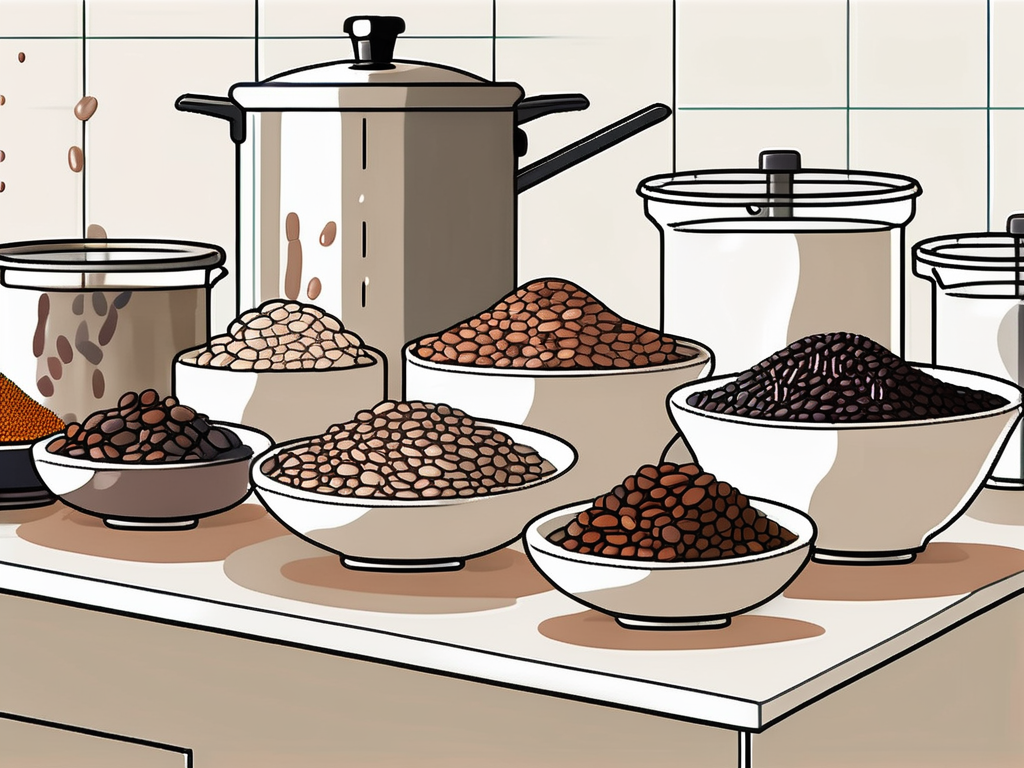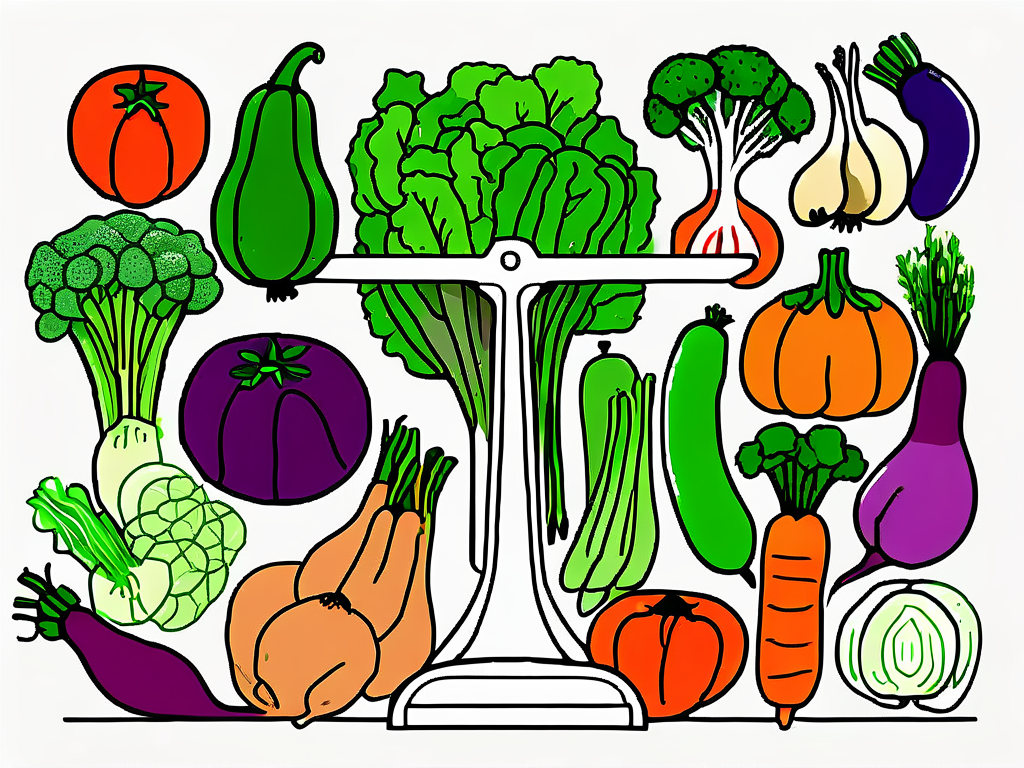Beans are a nutritious and versatile food that is loved by many. However, for individuals with digestive issues such as irritable bowel syndrome (IBS), following a low FODMAP diet may be necessary. In this article, we will explore the relationship between beans and FODMAPs, and provide tips on how to enjoy beans while adhering to a low FODMAP diet.
Understanding FODMAPs
FODMAPs, which stands for fermentable oligosaccharides, disaccharides, monosaccharides, and polyols, are a group of carbohydrates that can trigger digestive symptoms in sensitive individuals. These carbohydrates are found in a wide variety of foods, including fruits, vegetables, grains, and legumes. For people with IBS, the FODMAPs can ferment in the lower intestine, causing symptoms such as bloating, gas, and abdominal pain.

It's important to note that not all individuals are sensitive to FODMAPs. For those who do not experience digestive issues after consuming foods high in FODMAPs, there is no need to restrict these foods from their diet. However, for those with conditions like IBS, following a low FODMAP diet can significantly improve their quality of life.
What are FODMAPs?
FODMAPs are a collection of short-chain carbohydrates and sugar alcohols that are poorly absorbed by the small intestine. This means that they pass through the digestive system intact and are eventually fermented by the bacteria in the large intestine.
Some common examples of high FODMAP foods include apples, pears, wheat products, dairy products, and certain legumes. These foods can be particularly troublesome for individuals with IBS, as they can lead to increased gas production and bloating.
Why are FODMAPs Important for Digestive Health?
For individuals with IBS or other digestive disorders, FODMAPs can exacerbate symptoms and lead to discomfort. By identifying and avoiding high FODMAP foods, individuals can reduce their symptom frequency and improve their overall digestive health.
It's worth mentioning that following a low FODMAP diet should be done under the guidance of a healthcare professional or a registered dietitian. This is to ensure that individuals are still receiving adequate nutrition while managing their digestive symptoms. Additionally, it's essential to reintroduce high FODMAP foods gradually to determine personal tolerance levels and maintain a balanced diet.
The Low FODMAP Diet
The low FODMAP diet is a dietary approach that aims to reduce the intake of high FODMAP foods. It is often used as a management strategy for individuals with IBS or other gastrointestinal disorders. The diet involves a two-step process: firstly, avoiding high FODMAP foods for a specified period of time, and then reintroducing them one by one to determine personal tolerance levels.
Individuals embarking on the low FODMAP diet often find themselves navigating the complex world of food labels and ingredient lists with newfound scrutiny. This heightened awareness leads to a deeper understanding of the various sources of FODMAPs in everyday foods, empowering individuals to make informed dietary choices that align with their health goals.
Principles of the Low FODMAP Diet
The low FODMAP diet focuses on reducing the intake of foods high in certain types of carbohydrates, including fructans, galacto-oligosaccharides (GOS), lactose, excess fructose, and polyols. These carbohydrates can be found in a wide range of foods, including wheat, onions, garlic, dairy products, and certain fruits and vegetables.
Furthermore, the low FODMAP diet encourages individuals to explore alternative sources of nutrients to ensure a well-balanced intake while avoiding high FODMAP foods. This exploration often leads to the discovery of new and exciting ingredients that can add variety and flavor to meals, expanding culinary horizons in unexpected ways.
Benefits of a Low FODMAP Diet
Research has shown that following a low FODMAP diet can significantly reduce symptoms in individuals with IBS. It can help alleviate bloating, gas, abdominal pain, and diarrhea, leading to an improved quality of life.
Moreover, the benefits of the low FODMAP diet extend beyond symptom management, as many individuals report feeling more in tune with their bodies and experiencing heightened levels of energy and overall well-being. This increased awareness of the intricate relationship between diet and gut health often sparks a newfound appreciation for the profound impact that food choices can have on one's daily life.
Beans and FODMAPs
Beans are a staple in many diets, providing a good source of protein, fiber, vitamins, and minerals. However, some types of beans have a higher FODMAP content than others.
Understanding the FODMAP content of beans is crucial for individuals following a low FODMAP diet, especially those with irritable bowel syndrome (IBS) or other gastrointestinal sensitivities. By choosing the right beans, individuals can still enjoy the nutritional benefits without experiencing digestive discomfort.
Different Types of Beans
There are various types of beans available, each offering a unique flavor and texture profile. Black beans, known for their rich, earthy taste, are a popular choice in Latin American cuisine. Kidney beans, with their robust flavor and smooth texture, are commonly used in chili and salads. Chickpeas, also known as garbanzo beans, are versatile legumes that can be roasted for a crunchy snack or blended into creamy hummus. Lentils, available in various colors like green, red, and brown, are quick-cooking legumes that are perfect for soups, stews, and salads.
Bean FODMAP Content
Based on Monash University's low FODMAP diet guidelines, some beans are considered low FODMAP and suitable for consumption, while others are high in FODMAPs and should be limited or avoided. For example, canned chickpeas are high in GOS (galacto-oligosaccharides) and should be avoided by individuals sensitive to these fermentable carbohydrates. On the other hand, canned lentils are low in FODMAPs, making them a safe choice for those following a low FODMAP diet. By being mindful of the FODMAP content of different beans, individuals can make informed choices to support their digestive health.
Preparing Beans for a Low FODMAP Diet
Soaking and cooking techniques can help reduce the FODMAP content in beans, making them more tolerable for individuals following a low FODMAP diet.

For those embarking on a low FODMAP journey, mastering the art of preparing beans is essential. Soaking beans overnight and discarding the soaking water before cooking has been found to decrease the FODMAP content significantly. This process helps to leach out some of the oligosaccharides, the complex carbohydrates that can trigger digestive issues in sensitive individuals. Moreover, opting for a longer cooking time can further break down these complex carbohydrates, rendering the beans easier on the digestive system.
Soaking and Cooking Techniques
Soaking beans overnight and discarding the soaking water before cooking has been found to decrease the FODMAP content. Additionally, cooking beans thoroughly can help break down the complex carbohydrates, making them easier to digest.
Furthermore, experimenting with different soaking methods, such as adding a splash of apple cider vinegar or a pinch of baking soda to the soaking water, may offer additional benefits. These additives can help neutralize some of the compounds in beans that contribute to digestive discomfort, potentially enhancing the overall digestibility of the legumes.
Canned vs. Fresh Beans
When it comes to the FODMAP content in beans, there may be a difference between canned and fresh options. Canned beans often have a higher FODMAP content due to the added ingredients and processing methods. However, it's important to note that individual tolerances may vary, and some individuals may find that canned beans are well-tolerated in small quantities.
While fresh beans are generally preferred for their simplicity and lack of additives, canned beans can offer convenience and a longer shelf life. For those with sensitive digestive systems, rinsing canned beans thoroughly before consumption may help reduce the FODMAP load, potentially making them more suitable for a low FODMAP diet. Ultimately, the choice between canned and fresh beans depends on individual preferences and tolerances, highlighting the importance of self-experimentation in finding the most suitable options for a low FODMAP lifestyle.
Alternatives to Beans on a Low FODMAP Diet
If you are following a low FODMAP diet and need alternatives to beans for protein and fiber sources, there are several options available.

Low FODMAP Protein Sources
Some low FODMAP protein sources include tofu, tempeh, lean meats, poultry, fish, eggs, and lactose-free dairy products. These alternatives can provide adequate protein while minimizing FODMAP intake.
Low FODMAP Fiber Sources
To ensure a sufficient intake of dietary fiber, individuals can opt for low FODMAP options such as quinoa, gluten-free oats, chia seeds, flaxseeds, and leafy greens. These fiber-rich foods can support gut health without triggering symptoms.
Additionally, for those looking to add variety to their low FODMAP diet, seeds like pumpkin seeds, sunflower seeds, and sesame seeds can be excellent sources of both protein and fiber. These seeds can be sprinkled on salads, yogurt, or incorporated into smoothies for a nutritional boost.
Moreover, for individuals seeking a convenient and tasty snack option, rice cakes topped with almond butter or a handful of macadamia nuts can provide a satisfying combination of protein and healthy fats, making them a great addition to a low FODMAP meal plan.